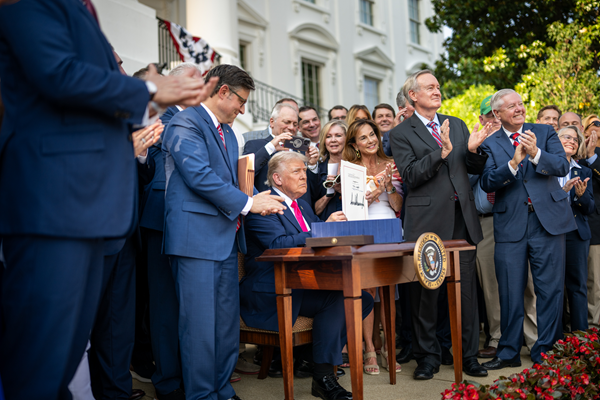.png)

By Rajesh Mahapatra
Rajesh Mahapatra, ex-Editor of PTI, has deep experience in political and economic journalism, shaping media coverage of key events.
September 8, 2025 at 1:44 PM IST
For two straight days, following the announcement of goods and services tax rate cuts, The Times of India carried front-page headlines on how the government wanted consumers to be the big winners. Finance Minister Nirmala Sitharaman has since given multiple interviews, saying she will personally monitor the impact of the cuts. Ministries have been told to track industries they administer and ruling party Parliamentarians have even tasked with keeping tabs on prices.
A discerning observer, however, could read the message differently. The government itself appears unsure whether benefits of lower GST will actually reach consumers. In an earlier column, following Prime Minister Narendra Modi’s Independence Day announcement, I had flagged the possibility of such anxieties. I had also argued that the claim that GST rate cuts would boost demand and growth rested on flawed assumptions — a view now vindicated by the muted reaction of the stock market and the government’s own admission of “pass-through” risks.
Some might argue that the market failed rally because changes were already priced in after Modi’s August 15 announcement. That is not entirely true. Markets did see a bounce on August 18, but later gave up most of the gains on more realistic expectations of what the GST reforms would look like. As a result, the Nifty 50 on September 5 closed only about 0.5% higher than on August 14. The market wasn’t enthused then, nor is it now — because it doesn’t see the changes as sweeping and bold enough to revive aggregate demand. At best, they may bring interim relief to a few consumers and producers, or provide a short-lived boost to certain sectors. But one would do well to resist the temptation of calling them a “game changer.”
How Sweeping?
Effective September 22, India will have four rates — 0%, 5%, 18%, and a new 40% “sin tax” — in place of the earlier five–slab structure of 0%, 5%, 12%, 18%, 28%. Most items from the 12% slab have been moved to 5%, while a few from the 5% and 12% slabs are now zero-rated. Several items earlier taxed at 28% have been shifted to 18%, while “sin goods” such as luxury cars, SUVs, tobacco, and online gaming will face the new 40% rate.
The government estimates the net revenue impact of these cuts at about ₹480 billion annually, or just a little over 2% of total GST collections, which is why the finance minister has said there would be no material fiscal impact. But if the cuts are truly sweeping, would the revenue forgone be so negligible? On closer scrutiny, the reductions appear far less broad-based than they are made out to be.
The government earns two-thirds of its GST revenues from items under the 18% slab, which has been largely untouched, except for insurance, where tax burden has been eased. In fact, some items such as coal will now be raised to 18%. In other words, there seems to be no big giveaway in the biggest revenue earning segment of the GST regime. The slabs that saw largest rate reductions — 12% and 5% — together account for only 12% about of total GST collections.
The revenue loss is likely most pronounced in the 28% slab, which covers consumer durables such as air conditioners, large TV sets, and automobiles. Here, the expectation is that some of the revenue losses on account of lower rates would be offset partly by higher sales and partly by a higher tax rate of 40% on sin goods.
While full-page announcements in newspapers and back-to-back media interviews by the finance minister would make us believe that the GST regime has been radically overhauled, the reality is different. The changes are specific to a few sectors and have left an overwhelming number of goods and services untouched. More importantly, even in the areas where the government has proposed to reduce taxation, it is not clear if it would result in pushing up demand and, thus, accelerate growth of the broader economy.
Price Elasticity
Most Indian FMCG companies currently operate on thin margins, as evident in recent earnings commentaries. They are unlikely to pass on the benefits. Even if they do, under the strict vigil of the government, demand for their products – be it hair oil, toothpastes or butter – tend to price inelastic, meaning a change in price has minimal impact on consumption. If someone consumes 50 gm butter every day, that consumer is unlikely to consume more butter because prices have come down. Which is why, most goods in the 12% and 5% slab that have seen a reduction in tax are unlikely to see any big change in their demand. At best, they can help reduce the economic hardship of the consumer to some extent, if companies pass on the benefit of lower taxes.
Research also shows that producers of essential goods may initially cut prices, nudged by the government, but restore them in due course of time. The biggest beneficiary of the proposed changes would, therefore, be limited to durable goods and automobiles. Cement is another area that may get a boost.
Price & Income
Price alone doesn’t drive consumption. Income plays an equal, if not larger, role. Earlier this year, the government announced significant tax concessions for salaried and middle-income groups, hoping to spur demand. That didn’t happen. Inflation and stagnant wages eroded the gains. At a time when job insecurity is on the rise, it is natural for salaried and fixed-income earners to shy away from discretionary spending.
The Reserve Bank of India has in the meantime cut rates three times in a bid to encourage investment. But most producers remain reluctant to borrow and invest in expanding capacity or setting up new business, because they are not sure if there would be enough demand for what they produce. Now, the government is betting on indirect tax cuts to revive consumption among masses, most of whom are not tax payers and, therefore, may not have benefitted from the income tax cuts announced in the Budget.
True, lower prices can indeed spur consumption. However a strong caveat applies, that real incomes have to be on the rise. But as economists Jean Dreze and Ritika Khera have demonstrated, real wages in rural India have stagnated over the past decade. Economist Prabhat Patnaik, using adjusted consumer price indices, has argued that there may have been a slight decline in real wages of rural labour.
The story of organised sector employment has been no different. Using data from the government’s Periodic Labour Force Surveys, India Ratings and Research recently reported that the overall real wage growth at the national level has been flat at 0.01% between April-June 2020 and January-March 2025. The real wage crisis is also reflected in a steady decline in household savings, which means a large number of Indians are being forced to dip into their savings to meet consumption needs. Stagnating real wages and shrinking household savings aside, the challenge of growing joblessness would overshadow any attempt to revive demand and consumption with cosmetic tax cuts.
The crisis of the Indian economy is structural and demands a much bigger and comprehensive response, rooted in an informed understanding of the issues and challenges we face today. It is time the government switched from its obsession with slogans to a bias for action.


